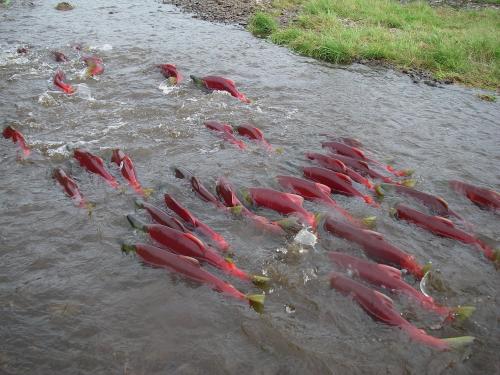At http://phys.org/print279447975.html … anyone that has been fishing for salmon, or just walking the river bank in somewhere like Vancouver Island, will have wondered why so many salmon congregate at a certain time of the year in order to collectively migrate upriver to lay eggs for the next generation of fish. They will fill the waters around the estuary of rivers and men in boats will seek them out, and at this point they will still be feeding. Once they decide to enmasse embark upriver they stop feeding and are solely intent on navigating the river channel, which invariably includes negotiating a succession of rapids and waterfalls. Fish can be seen jumping or heaving in the pools below the rapids, and eventually each of them will swim up against the flow of the water running downstream, wasting enormous amounts of energy by jumping clear of the water in some situations.

How do all these fish know where to go? How do they all come back to the same river in which they hatched, grew, and migrated from. It seems the sockeye salmon use magnetic fields to navigate. The paper is published in Current Biology Feb 7th. However, it is not only magnetic fields that guide them, they also use the Sun as a compass and track waves breaking on beaches, and smell. Smell is important.
At http://phys.org/print279440184.html … birds also migrate using a magnetic map. In fact, they even have bits of magnetic material inside them in order to navigate properly. However, thee was also a post a few days ago about homing pigeons getting lost and why this might be. They can become disorientated, not because of the magnetic field but because of winds and bad weather that can confuse the magnetic information. It isn't an infallible way of navigating but it manages to get a large number of birds, or fish, from summer to winter feeding areas.
